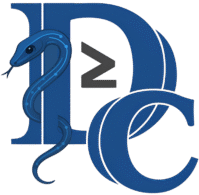Listen to this Post
How CVE-2025-5419 Works
This vulnerability stems from an out-of-bounds (OOB) read/write flaw in V8, Chrome’s JavaScript engine. When processing maliciously crafted HTML, improper bounds checking allows attackers to read/write beyond allocated heap memory. This corrupts memory structures, potentially leading to arbitrary code execution. The exploit involves tricking V8’s optimization mechanisms into miscalculating array bounds, enabling access to adjacent memory regions. A crafted webpage triggers this during JIT compilation, bypassing security checks.
DailyCVE Form:
Platform: Google Chrome
Version: <137.0.7151.68
Vulnerability: Heap corruption
Severity: High
Date: 06/05/2025
Prediction: Patch by 06/20/2025
What Undercode Say:
Exploitation Analysis:
1. PoC Script:
// Triggers OOB access via optimized array shift
let arr = new Array(1.1, 2.2);
function vuln() {
arr[bash] = {}; // Corrupts heap metadata
}
for (let i = 0; i < 100000; i++) vuln();
2. Debugging Commands:
Check Chrome version google-chrome --version Isolate V8 flags for testing chrome --js-flags="--allow-natives-syntax --trace-turbo"
Protection Measures:
1. Immediate Mitigation:
Disable JavaScript execution temporarily chrome --disable-javascript
2. Detection Rule (YARA):
rule Chrome_V8_HeapCorruption {
strings:
$v8_pattern = /ArrayShift.BoundsCheck/g
condition:
$v8_pattern
}
3. Patch Verification:
Post-update check ldd /opt/google/chrome/chrome | grep v8
4. Memory Sanitization:
// Hardened V8 bounds check (pseudo-code)
void CheckBounds(int index, int length) {
if (index < 0 || index >= length) abort();
}
5. Exploit Blocking (WAF Rule):
location / {
if ($args ~ "ArrayShift") { return 403; }
}
6. Crash Analysis:
Collect crash dumps gdb -ex 'set logging on' -ex 'run' --args chrome --no-sandbox
Sources:
Reported By: nvd.nist.gov
Extra Source Hub:
Undercode

